To see innovations only in the product and its features is not enough. This is why Aesculap AG, the medical technology division of the B. Braun group, founded werk_39. The innovation laboratory focuses more strongly on services and business model innovation. As a project partner, IBsolution has implemented various innovative applications and solutions together with werk_39. In an interview, Sören Lauinger, Vice President Intrapreneurship & Co-Creation of werk_39, talks about the creation of the innovation lab and the challenges that the daily search for innovations brings with it.
How would you describe werk_39?
werk_39 is the innovation laboratory of B. Braun. The subtitle “Beyond the product” makes it clear that we are not competing with our research and development department, but that we are supplementing its work with topics that build on existing products. These are usually services, solutions and business model innovations.
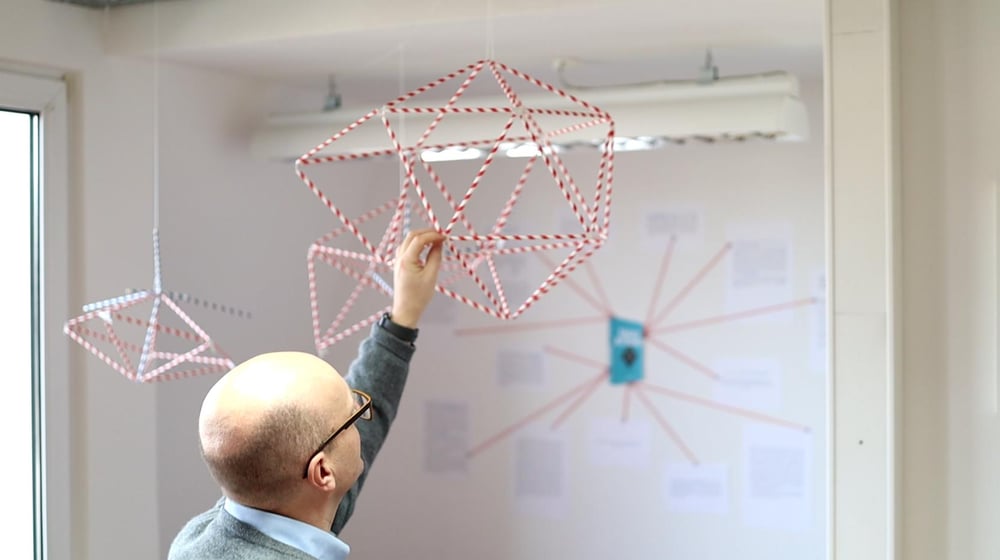
What does your business model look like?
In organizational terms, we are a cost center, not an independent unit. However, we have moved into our own building, about two and a half kilometers from the B. Braun Aesculap Division plant in Tuttlingen. If you want to talk about a business model: We support our core business units by innovating. We focus on services and business model innovation – in other words, on what is often not the focus of pure product innovation.
What made an innovation lab necessary?
It wasn’t as if someone was taking a shower in the morning and suddenly had the intuition that we needed an innovation lab. It was more of an evolution. The team that today forms werk_39 has been working together for many years and was formerly the service innovation unit within the Aesculap division. werk_39 was then the next logical step to give innovation a home and a face.
When was the birth of werk_39?
That was March 6, 2017, when we moved into our present premises. Before that, we had already had for some time the idea of founding our own innovation lab. We worked for over a year on the concept and looked at what companies in other industries were doing in this regard. On this basis, we then defined our version of an innovation lab.
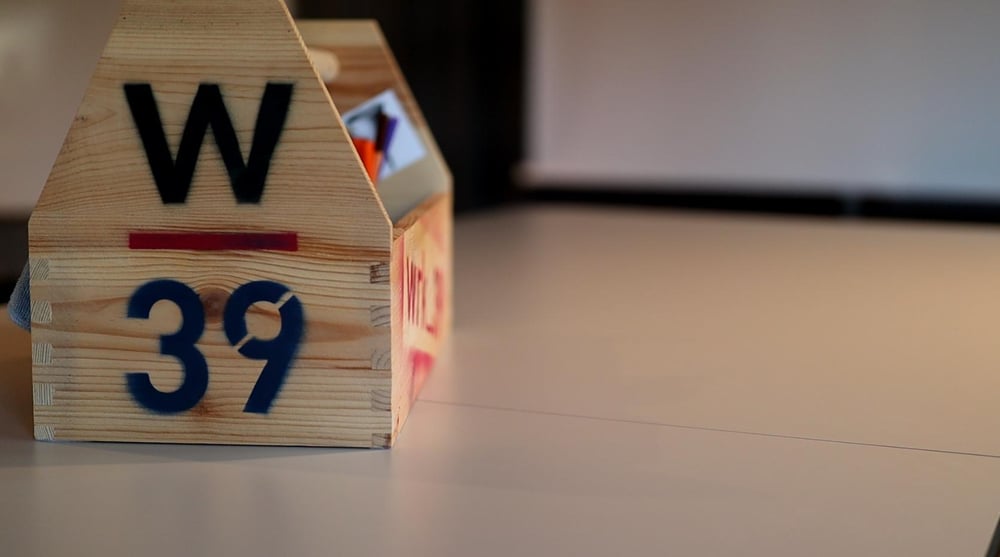
How did you convince the Aesculap management of werk_39?
Let’s put it this way: there were certain market changes, also on an international scale, which made us ask ourselves the question: How can we react to them? I remember exactly how we presented various initiatives to the management. Item 6 of the agenda bore the working title “Co-Creation Center Brain Factory”. This meant that the executive board was open to the idea and gave us the task of further developing the concept.
We then looked at many examples: What is DHL researching in its Innovation Center? What is the concept behind the SAP AppHaus in Heidelberg? How does Lufthansa do it at its Innovation Hub in the middle of Berlin? We also came across a private American hospital chain that has founded an innovation lab near Silicon Valley. Some of our customers also operate innovation labs. All these suggestions have accelerated the idea quite a bit.
What is your approach?
Steve Jobs once said he’d rather be a pirate than join the navy. I think that’s the right attitude. It takes a certain drive to change things and think big enough. The credo of our team is: we rather ask for forgiveness than permission. If we demand entrepreneurial thinking and action from all employees, I have to live up to this basic idea. You have to take things into your own hands. Sometimes you are shown limits. But that is better than asking for permission, because that does not ensure agility and entrepreneurial action. That makes us “pirates” in the “navy”.
 Has werk_39 always had that name?
Has werk_39 always had that name?
Originally, our innovation lab had the working title “Brain Factory”. However, we got cold feet because both the corresponding .com domain and the .de domain were taken. Just before Christmas 2016 we had exactly three days to create a new name. We quickly decided on the German term “Werk” because we are a German company. The 39 refers to the year B. Braun was founded: 1839. We are very satisfied with the name werk_39.
How do you measure the success of your innovation lab?
There are various criteria. On the one hand, our work makes positive headlines, but of course that is not enough to justify it. Secondly, we measure every project by the extent to which it pays off in terms of additional growth or digital transformation. We can use a matrix to locate the individual projects. We measure ourselves on that basis.
Perhaps it is also part of our mission to demystify the concept of innovation and place more emphasis on the craft aspect, i.e. the innovation practice. After all, innovation is always also a large piece of craftsmanship, hard work. It is not for nothing that the saying goes “1% is inspiration and 99% is transpiration”. But on what basic structure and methodology is this hard work based? We believe very strongly in lean start-up – a methodology postulated by Eric Ries, around which a real movement has emerged over the past ten years.
What methods of lean start-up do you work with?
We are active in medical technology, an industry where everything is heavily regulated – including innovations. However, we do not necessarily want to create a new medical product. Instead, we focus mainly on things that are not regulated, for example process improvements or digital support for our customers, the hospitals. The basic principle of lean start-up, which is aimed at really understanding a problem, helps us to do this. We start with search fields that come from the business units. This ensures that we don't push our innovations in cloud-cuckoo-land, but that our multidisciplinary teams are always strongly linked to the business units.
How does that work?
You have to develop an understanding of the customer problem and put yourself in the customer's place. From various approaches, we determine the problem-solution-fit, i.e. the solution with the greatest benefit for the customer. Then we check the technical feasibility – often with the participation of the customer, preferably at the customer’s site. It is not a matter of a finished prototype, rather we take a lean approach. If something does not work, the idea is discarded. If, on the other hand, the idea can be validated, the next step is the solution-market-fit: Can we use it to develop a business model that the customer is willing to pay for?
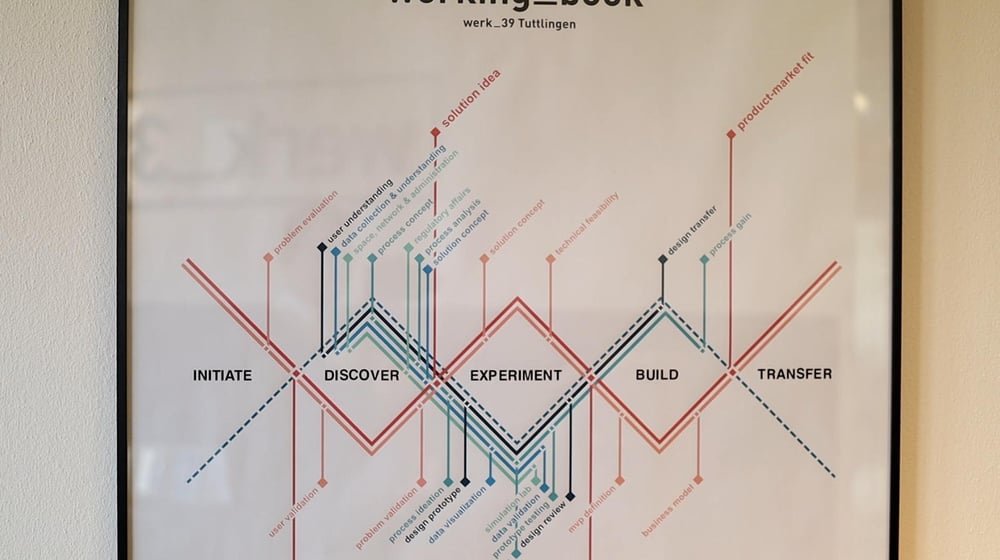
What skills are required?
The multidisciplinary teams working at werk_39 – some would call them “corporate start-ups” – must above all master the principle “build – measure – learn”. We do not just do customer or expert surveys. There are other ways how I can use experiments to illustrate a change in the customer’s behaviour and measure it quantitatively and qualitatively. The results of the experiments tell the team how to proceed. You have to recognize when there are good reasons to stop the project because the experiment has shown that the defined dimensions or goals are not being achieved. It is a matter of verifying or falsifying the most risky assumptions on a weekly basis. This approach fundamentally changes the way decisions are made. This is something we need to work on continuously as the decision teams on juries decide on budgets and resource allocation.
The fact that the teams conduct experiments with customers and that decisions are made based on the results of these experiments is, in my view, a major part of the transformation. No one is omniscient. We have to understand that the knowledge lies in the teams that have studied the matter in depth. There is enormous potential in this insight and it provides answers to how the industry must position itself in the coming decades.
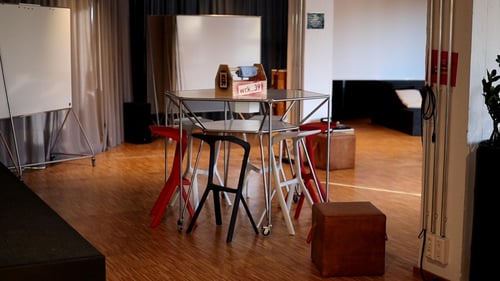 How do you find the right employees?
How do you find the right employees?
If the employees have the ambition to take high innovation hurdles and want to inspire the user at the same time, they are right for us. Some are tired of the previous system. The product management defines on 180 pages what is to be developed. That might work for things with a low degree of innovation, i.e. incremental innovation. But if we want to achieve a high degree of innovation, there is often a lot of uncertainty. And this uncertainty must be reduced.
One way of recruiting is through the intrapreneurship program: we put together multidisciplinary teams from the core area. But of course we also have a management team at werk_39 with certain domain experts, specialists and innovation mentors – we call them “venture specialists” and “venture consultants”.
werk_39 has meanwhile made a good name for itself, so that we receive many unsolicited applications. We also work closely with universities and colleges, which means we get good interns. If it suits both sides, we strive to bind them to us in the long term.
Apart from capable employees, what factors are decisive for the success of an innovation lab?
The management plays a central role. You need support from the very top. External partners like universities are also important. Even more important are customers who realize that they may not be able to do the big things on their own and use our expertise. We call this “co-creation”. Market companions can certainly play a role here. Then there are technology partners, i.e. companies with a certain domain expertise, for example in the IT environment. This cooperation is particularly important in the phases in which we try things out.
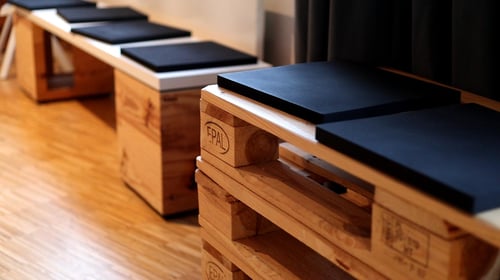 How did the cooperation with IBsolution come about?
How did the cooperation with IBsolution come about?
We worked together with SAP at a very early stage of werk_39 because we were always impressed by the AppHaus in Heidelberg and the way they approach innovation there. The colleagues from SAP recommended IBsolution to us. So we became partners and worked closely together. This has resulted in some exciting solutions. And I had the impression from the beginning: IBsolution is always open to all sorts of outrageous actions in the most positive sense.
What would you advise someone who wants to build up an innovation lab?
I would say it with the words of innovation guru Dan Toma, co-author of the book “The Corporate Startup”, which I can warmly recommend, by the way. Dan Toma says: “Building an innovation lab to be more innovative is like washing hands to stay healthy. Undoubtly helpful, but by far not enough.” The goal must be to take things out of the innovation lab and into the entire width of the company as quickly as possible. If a company has an appropriate innovation culture, the ideal solution is to place individual innovation units in the functional areas, for example in the finance department or in production. We have taken a different path: We have moved away from the corporate campus and are now able to diffuse methods or findings that work for us into the company in a targeted manner. Just building an innovation laboratory and hoping that everything will work out well is not enough. This is just innovation theatre and does not benefit the company.
![IBacademy_Logo_blau[496] IBacademy_Logo_blau[496]](https://www.ibsolution.com/hs-fs/hubfs/IBacademy_Logo_blau%5B496%5D.jpg?width=200&name=IBacademy_Logo_blau%5B496%5D.jpg)



